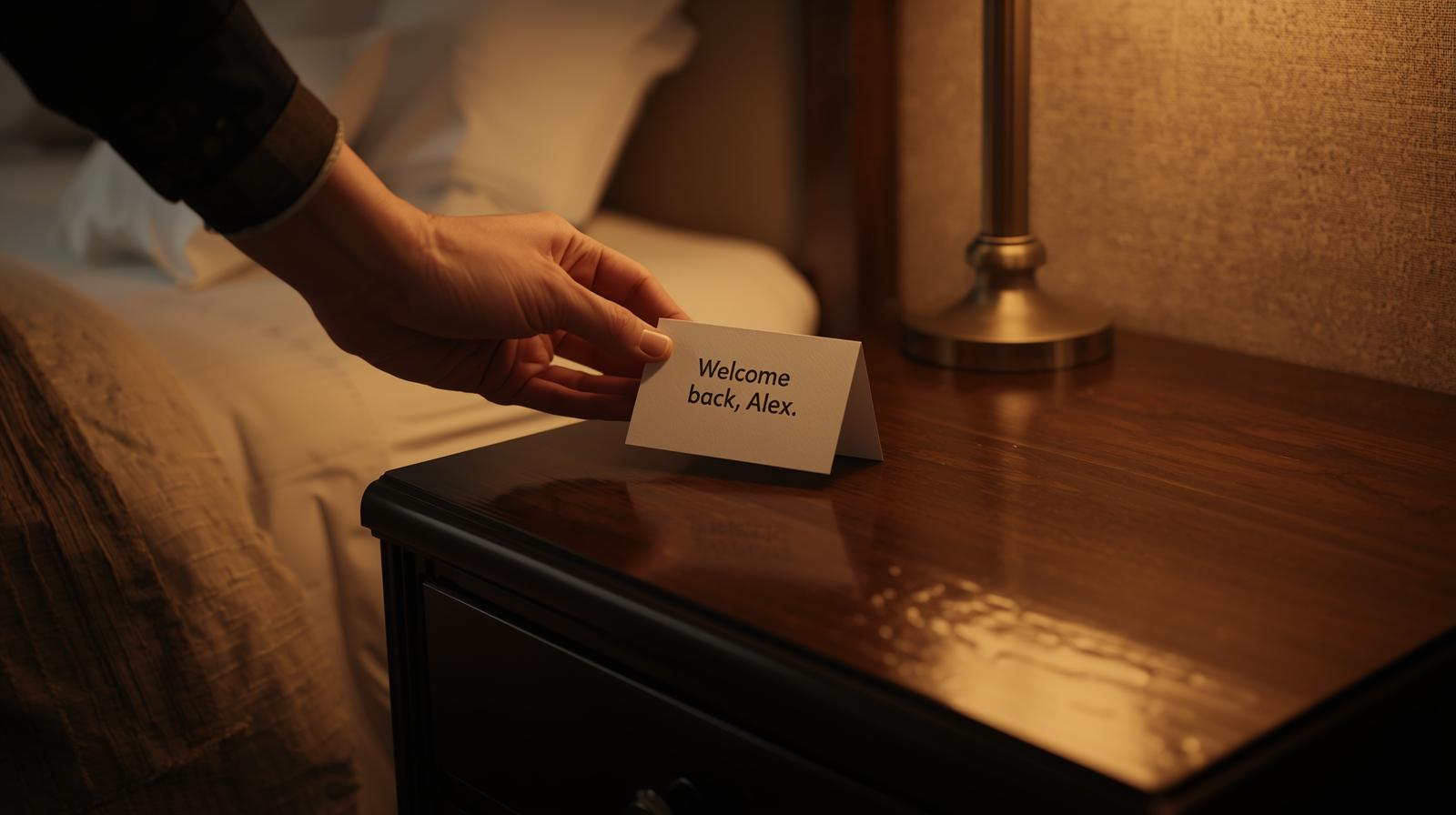Rethinking Loyalty: From Points to Personalization
Guests Don’t Want to Collect — They Want to Connect
For decades, loyalty programs were built on math: points, nights, tiers, and redemption charts. Guests played the game because it made sense — stay more, earn more. But the rules have changed.
Today’s travelers aren’t chasing rewards. They’re chasing recognition. What keeps them coming back isn’t the size of the discount, but the feeling of being seen, remembered, and valued.
That emotional shift is rewriting hospitality’s oldest equation. Loyalty can no longer be measured in transactions. It’s measured in connection.
Why Traditional Loyalty Is Losing Its Power
Legacy loyalty programs were built for a different era — when consistency and convenience ruled. Guests stuck with one brand because options were limited and points meant something tangible. But as travel diversified, so did expectations.
Now, guests expect every stay to feel personal. The spreadsheet-driven model of “earn, redeem, repeat” no longer fits a world where experience matters more than accumulation.
A Platinum card doesn’t make a guest feel special. A message that says, “Welcome back, we’ve prepared the same pillow you liked last time” does.
That’s the kind of emotional intelligence that no tier status can buy.
Loyalty fails when it feels like bureaucracy. It thrives when it feels like memory.
Personalization Is the New Currency
Technology has finally caught up with the promise of personalization. With AI-powered CRMs, sentiment analysis, and guest messaging platforms, hotels can now understand guests as people — not profiles.
It’s no longer about remembering a birthday or logging preferences. It’s about context. Who’s traveling alone this time? Who tends to extend stays on Fridays? Who always orders breakfast late?
True personalization happens in micro-moments:
- A WhatsApp message greeting the guest by name when they arrive.
- A pre-stay note suggesting nearby jogging routes because the system knows they’ve asked before.
- A late checkout offer timed perfectly after a long-haul flight.
These touches don’t just increase satisfaction — they build attachment. And attachment is the new definition of loyalty.

Blending AI and Empathy
AI is transforming loyalty, but it’s not replacing the human touch — it’s amplifying it.
Smart systems can spot behavioral patterns, predict needs, and trigger relevant offers. But what truly moves guests is when people act on those insights with empathy.
That’s where great teams stand out. A CRM can remind staff that a guest requested almond milk; a thoughtful server who remembers it without being told makes the difference.
Hotels that train their staff to combine data-driven insights with natural warmth are creating what every guest wants: personalization that feels human, not automated.
How to Build Emotional Loyalty
1. See guests as individuals, not segments.
Move beyond demographic buckets. Create space in your systems for stories — not just stats.
2. Reward relevance, not repetition.
Loyalty should feel like recognition, not routine. A small, meaningful gesture often outweighs a big, generic discount.
3. Connect technology and timing.
A perfectly timed message can turn a neutral moment into a memorable one. That’s how loyalty is earned quietly, over time.
4. Empower your front line.
Give staff access to guest insights so they can personalize interactions naturally, without scripts or prompts.
5. Measure what matters.
Track emotional engagement — repeat stays, open rates for personalized messages, mentions in reviews — not just points redeemed.
The New Definition of Loyalty
The future of loyalty isn’t about locking guests into systems. It’s about inviting them into relationships.
When technology helps hotels understand, anticipate, and care — not just transact — loyalty becomes less of a program and more of a partnership.
Because guests don’t remember how many points they earned.
They remember how you made them feel when they walked through the door.
That’s the kind of loyalty no algorithm can fake.